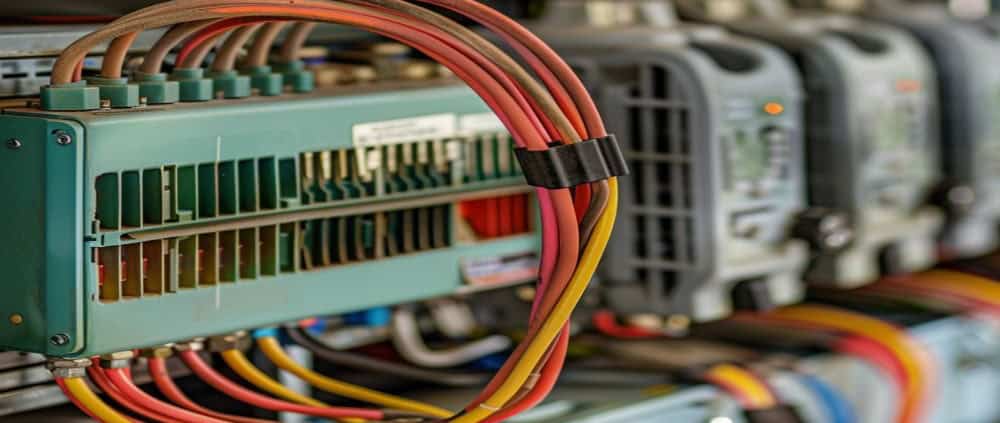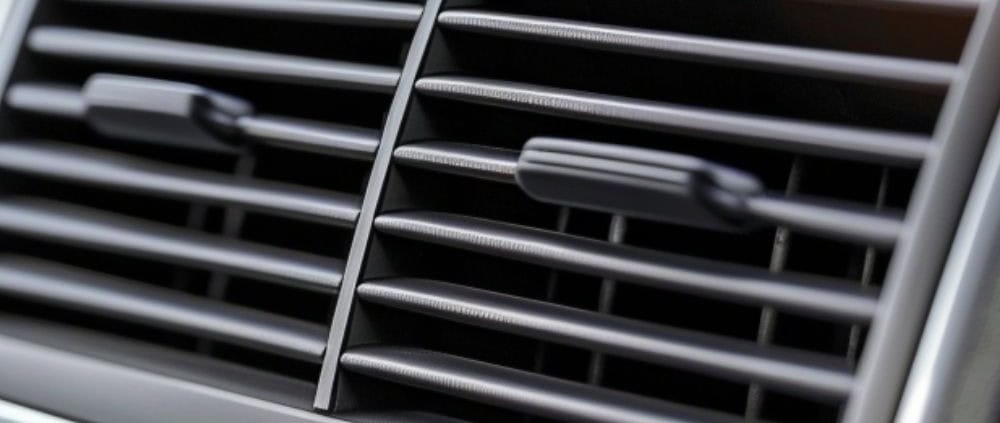How Much Electricity Does a Window AC Use
Window air conditioners (ACs) are popular choices for cooling smaller spaces efficiently. Whether it’s a bedroom, office, or living room, these units offer a convenient solution to beat the heat. However, many consumers wonder about the electricity consumption of these devices. Let’s delve into the details to understand how much electricity a window AC typically uses.
Introduction to Window ACs
Window ACs are self-contained units designed to cool single rooms. They are mounted on windows or walls and work by drawing in warm air, passing it over cooling coils filled with refrigerant, and then releasing the cooled air back into the room. These units are known for their affordability, ease of installation, and effectiveness in smaller spaces.
Understanding Electricity Consumption
Factors affecting electricity usage
Several factors influence the electricity consumption of a window AC, including:
- Size and capacity: Larger units with higher BTU (British Thermal Unit) ratings consume more electricity.
- Efficiency: Energy-efficient models consume less power to achieve the same level of cooling.
- Usage habits: The duration of operation and temperature settings significantly impact energy usage.
Energy Efficiency Ratio (EER)
The Energy Efficiency Ratio (EER) measures an AC unit’s cooling capacity relative to its power consumption. A higher EER indicates better energy efficiency, meaning the AC consumes less electricity for the same cooling output.
Average Electricity Consumption of Window ACs
BTU rating and energy usage
The BTU rating of a window AC indicates its cooling capacity. As a general rule, higher BTU ratings correlate with higher electricity consumption. For example, a 5,000 BTU unit typically consumes less power than a 10,000 BTU unit.
Typical power consumption range
A window AC unit consumes between 500 and 1500 watts per hour. However, this can vary based on the unit’s size, efficiency, and usage patterns.
Impact of Usage Habits on Electricity Consumption
Temperature settings
Setting the thermostat to lower temperatures increases energy consumption. Opting for moderate temperature settings can help reduce electricity usage.
Duration of usage
The longer the AC runs, the more electricity it consumes. Turning off the unit when not needed and using programmable thermostats can minimize unnecessary usage.
Maintenance and cleaning
Regular maintenance, including cleaning or replacing air filters and ensuring proper insulation around the unit, can optimize performance and reduce energy consumption.
Tips to Reduce Electricity Usage
Optimal temperature settings
Set the thermostat to the highest comfortable temperature to reduce energy consumption without sacrificing comfort.
Proper sizing of AC unit
Choose an appropriately sized unit for the space to avoid overworking the AC, which can lead to higher electricity bills.
Regular maintenance
Schedule routine maintenance, including cleaning filters, coils, and vents, to ensure optimal performance and energy efficiency.
Environmental Impact of Window ACs
Energy consumption and carbon footprint
Window ACs contribute to electricity consumption, impacting the environment through carbon emissions from power generation. Choosing energy-efficient models and minimizing usage can reduce this environmental impact.
Comparison with other cooling options
Compared to central air conditioning systems, window ACs are generally more energy-efficient for cooling smaller spaces. However, alternatives such as fans and evaporative coolers consume less electricity but may provide a different level of cooling.
Conclusion
Window air conditioners offer a convenient cooling solution for single rooms, but their electricity consumption varies based on size, efficiency, and usage habits. Consumers can minimize their environmental impact and reduce electricity bills by understanding these factors and implementing energy-saving practices.
FAQs
- How do I determine the right size of a window AC for my room?
- Measure the room’s square footage and refer to the manufacturer’s guidelines for BTU recommendations.
- Do window AC units with higher EER ratings cost more?
- Energy-efficient models may have a higher upfront cost but can lead to long-term savings on electricity bills.
- Can I use a window AC to cool multiple rooms?
- Window ACs are designed for single-room cooling and may only effectively cool multiple rooms if they are small and well-insulated.
- Is it better to leave the AC running all day or turn it on only when needed?
- It’s more energy-efficient to turn the AC off when not needed and use programmable thermostats to regulate temperature based on occupancy.
- How often should I clean or replace the air filter in my window AC?
- Check the manufacturer’s recommendations, but generally, filters should be cleaned or replaced every 1-3 months to maintain optimal performance.
How Long Does an AC Capacitor Last?
Introduction
When it comes to the longevity of your air conditioning system, one crucial component to consider is the AC capacitor. This small but mighty device plays a significant role in the proper functioning of your AC unit. Understanding how long an AC capacitor lasts and the factors affecting its lifespan is essential for maintaining your cooling system efficiently.
What is an AC Capacitor?
An AC capacitor, short for air conditioning capacitor, is an electrical component that stores and releases electrical energy to help start the compressor and fan motors in your air conditioning system. It acts as a temporary battery, supplying the extra voltage needed during startup.
Types of AC Capacitors
Two main types of AC capacitors are used in air conditioning systems: start capacitors and run capacitors. Start capacitors provide the extra torque needed to start the compressor, while run capacitors help maintain a consistent voltage supply to keep the motor running smoothly.
Factors Affecting AC Capacitor Lifespan
Several factors influence the lifespan of an AC capacitor, including:
- Usage Frequency: The more often your air conditioning system operates, the more strain it puts on the capacitor.
- Operating Conditions: Extreme temperatures and humidity levels can affect the performance and longevity of capacitors.
- Quality of Capacitor: Higher-quality capacitors tend to last longer and withstand harsher conditions better.
- Environmental Factors: Exposure to dust, debris, and other contaminants can degrade the capacitor over time.
Signs of a Failing AC Capacitor
Knowing the warning signs of a failing AC capacitor can help prevent unexpected breakdowns. Common symptoms include weak airflow, warm air from the vents, and unusual noises such as humming or buzzing.
Average Lifespan of AC Capacitors
The average lifespan of an AC capacitor can vary depending on several factors, but generally, start capacitors last around 5 to 10 years, while run capacitors have a lifespan of 10 to 20 years.
Extending the Lifespan of AC Capacitors
Regular maintenance and servicing can extend the lifespan of your AC capacitor. This includes cleaning the unit, inspecting for any signs of damage, and replacing worn-out parts as needed.
Replacing an AC Capacitor
If your AC capacitor shows signs of failure, it must be replaced promptly to avoid further damage to your air conditioning system. While some homeowners may choose to replace the capacitor themselves, hiring a professional is recommended to ensure safety and proper installation.
Cost of AC Capacitor Replacement
The cost of replacing an AC capacitor can vary depending on factors such as the type of capacitor, the brand, and the contractor’s labor fees. On average, homeowners can expect to pay anywhere from $100 to $500 for capacitor replacement.
Conclusion
Regular maintenance and timely replacement of AC capacitors are crucial for ensuring the longevity and efficiency of your air conditioning system. By understanding the factors affecting capacitor lifespan and recognizing the warning signs of failure, you can keep your home relaxed and comfortable year-round.
FAQs
- How do I know if my AC capacitor is failing?
- Signs of a failing AC capacitor include weak airflow, warm air from vents, and strange noises from the unit.
- Can I replace my AC capacitor myself?
- While some homeowners may attempt DIY capacitor replacement, hiring a professional for safety and proper installation is recommended.
- How often should AC capacitors be inspected?
- AC capacitors should be inspected annually as part of routine maintenance to ensure they are in good working condition.
- Are there any warning signs before an AC capacitor fails?
- Common warning signs of a failing AC capacitor include decreased cooling performance and unusual noises from the unit.
- What happens if I don’t replace a failing AC capacitor?
- Ignoring a failing AC capacitor can lead to further damage to your air conditioning system, potentially resulting in more costly repairs.
Does Cabin Air Filter Affect AC?
Imagine driving on a scorching summer day, seeking solace in the cool embrace of your car’s air conditioning system, only to find it struggling to provide relief. One of the often-overlooked culprits behind such AC woes could be a neglected component – the cabin air filter.
Introduction
The cabin air filter is a vital but often underrated component of a vehicle’s HVAC (Heating, Ventilation, and Air Conditioning) system. It acts as a barrier, preventing dust, pollen, pollutants, and other debris from entering the vehicle’s cabin through the HVAC system. While its primary purpose is to maintain air quality inside the car, it also plays a crucial role in adequately functioning the AC system.
The function of Cabin Air Filter
The cabin air filter serves as a guardian, filtering out harmful particles and pollutants from the outside air before they circulate inside the vehicle’s cabin. By trapping dust, pollen, mold spores, and other contaminants, it ensures that the air entering the cabin is clean and free from allergens, safeguarding passengers’ health and comfort.
Impact of a Dirty Cabin Air Filter on AC Performance
A neglected or clogged cabin air filter can significantly impact the performance of the AC system. Over time, dirt and debris accumulate in the filter, impedeing airflow into the cabin and forcing the AC system to work harder to maintain the desired temperature. This increased workload not only strains the AC components but also leads to reduced cooling efficiency and airflow.
Symptoms of a Clogged Cabin Air Filter
Recognizing the signs of a clogged cabin air filter is crucial for maintaining optimal AC performance. Some common symptoms include weak airflow from the vents, a musty or unpleasant odor when the AC is turned on, and increased allergies or respiratory issues among passengers.
Benefits of Regular Cabin Air Filter Replacement
Regular cabin air filter replacement offers numerous benefits. It ensures improved air quality inside the vehicle, enhances the performance of the AC system, and contributes to the longevity of AC components by reducing strain and wear.
How Often Should You Replace Your Cabin Air Filter?
The frequency of cabin air filter replacement varies depending on several factors, including driving conditions, environmental pollutants, and the manufacturer’s recommendations. As a general rule of thumb, replacing the cabin air filter every 12,000 to 15,000 miles or as recommended in the vehicle’s owner’s manual is advisable.
DIY vs. Professional Replacement
While replacing the cabin air filter is a relatively simple task that can be done DIY, opting for professional replacement offers certain advantages. DIY enthusiasts can follow step-by-step instructions in the owner’s manual or online tutorials, whereas professional replacement ensures precision and thorough inspection of the entire HVAC system.
Choosing the Right Cabin Air Filter
When selecting a replacement cabin air filter, it’s essential to consider factors such as OEM (Original Equipment Manufacturer) vs. aftermarket filters, filtration efficiency ratings, and the material used. While OEM filters are designed specifically for your vehicle, aftermarket filters may offer comparable performance at a lower cost.
Maintaining Your AC System
In addition to regular cabin air filter replacement, proper maintenance of the entire AC system is crucial for optimal performance. This includes periodic inspections, cleaning AC components, and promptly addressing any issues to prevent costly repairs down the line.
Common Misconceptions About Cabin Air Filters
Dispelling common myths surrounding cabin air filters is essential for understanding their impact on AC performance. Contrary to popular belief, a dirty cabin air filter not only affects air quality but also significantly hampers the efficiency of the AC system, leading to increased energy consumption and potential damage to AC components.
FAQs
- What happens if I don’t replace my cabin air filter?
- Neglecting cabin air filter replacement can lead to reduced airflow, decreased AC performance, and potential damage to AC components.
- Can a dirty cabin air filter cause AC compressor failure?
- A clogged cabin air filter can overwork the AC compressor, leading to premature wear and potential failure.
- How do I know if my cabin air filter needs replacing?
- Signs of a clogged cabin air filter include weak airflow, unpleasant odors, and increased allergies or respiratory issues.
- Can I clean and reuse a cabin air filter?
- While some filters are washable and reusable, most are designed for single-use replacement to ensure optimal filtration efficiency.
- Are expensive cabin air filters better than cheaper ones?
- Not necessarily. The key lies in choosing a filter with the appropriate efficiency rating and material suitable for your vehicle’s needs.
Conclusion
In conclusion, the cabin air filter plays a crucial role in maintaining air quality and AC performance inside your vehicle. By understanding its function and importance and adhering to a regular maintenance schedule, you can ensure a comfortable and healthy driving experience for you and your passengers.





